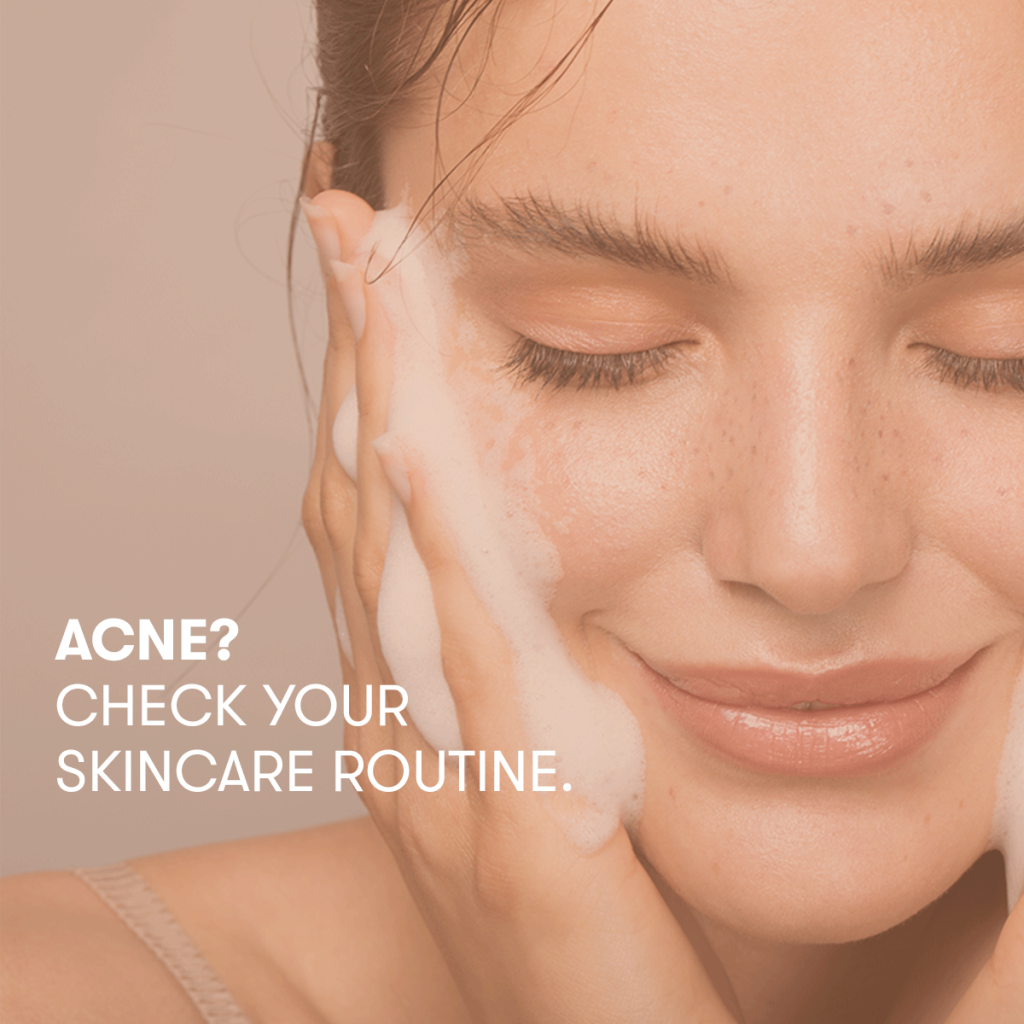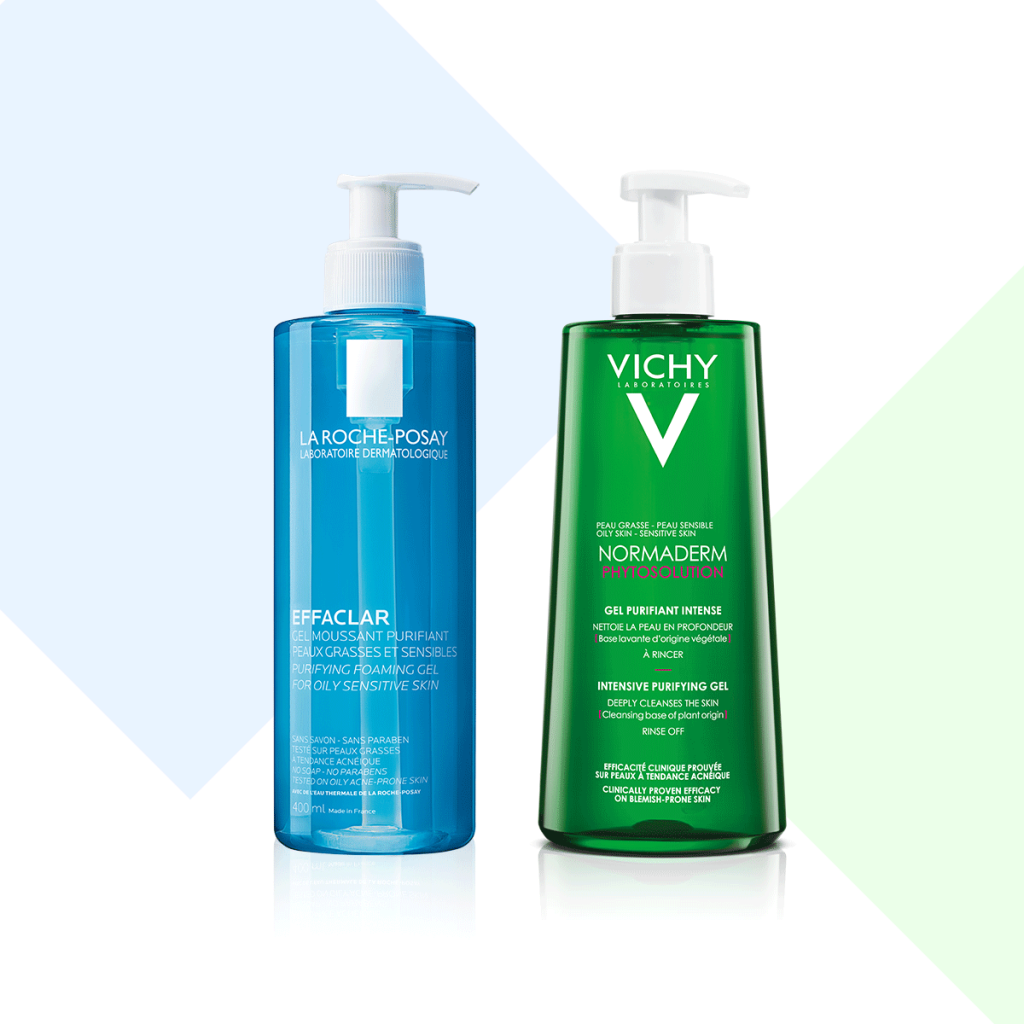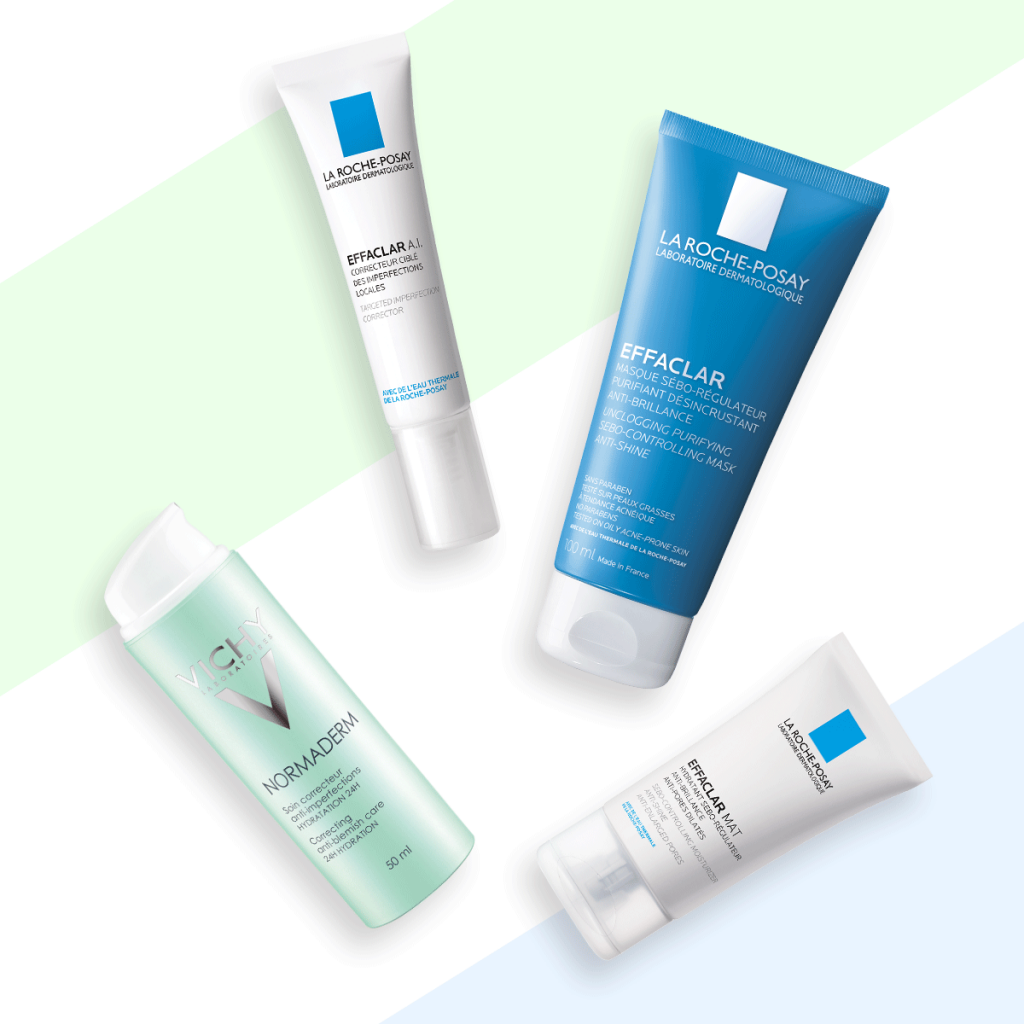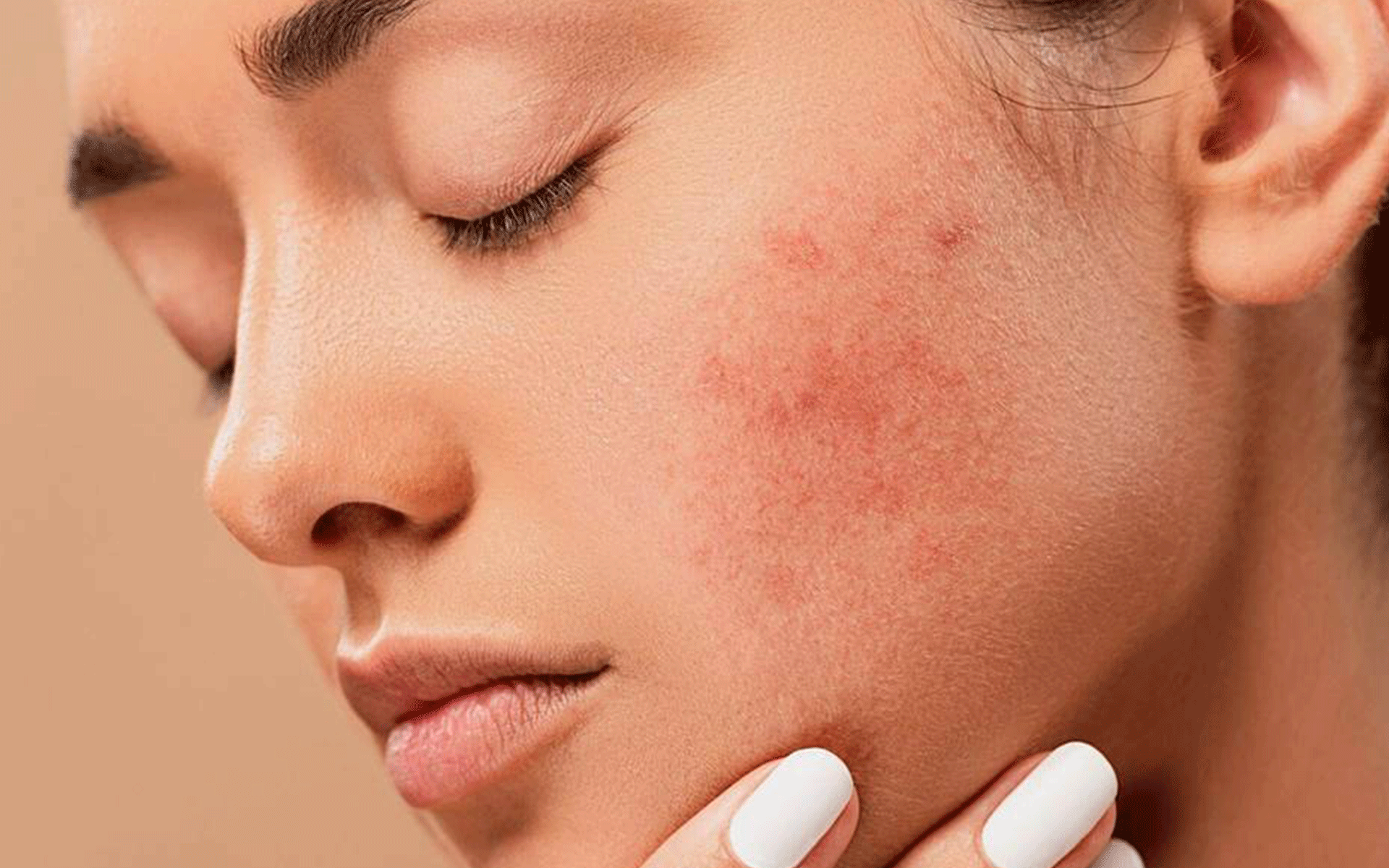Even though acne and oily skin are often associated with teenagers, adults can experience these too. In fact, it is even possible to get acne for the first time in your 30s, 40s, and even 50s. Excess sebum (natural oil) on the skin can lead to skin imperfections due to clogged pores. Women tend to get acne more than men in their adult life and it is common in those going through menopause. This is especially true for those women who smoke.
Acne may consist of whiteheads, blackheads, and small pustules. It may even get worse and result in extreme swelling, redness, irritation, and sometimes deep cysts that can cover a large area of the face or body.

I’m way past puberty. Why did I get adult acne?
There are several reasons why acne and oily skin may appear or reappear in adulthood. Some examples are fluctuating hormone levels, stress, family history of acne (genetics), and the skincare products being used. It is usually possible to alleviate acne or at least improve the condition of the skin by adapting your skincare routine to this condition.
The underlying reason for acne should always be investigated and if possible treated. Some women decide to use a contraceptive pill to balance out their hormone levels and treat acne. Dealing with stressful situations can diminish flare-ups. For others it may be necessary to make dietary changes as consumption of foods with a high glycemic index (sugars, carbohydrates, and saturated fats) may increase production of sebum. Acne can also appear as a side effect of medication or an undiagnosed medical condition. If you suspect any of these reasons, it is important to talk to your doctor. Never stop medication you have been prescribed without consulting a healthcare practitioner such as your doctor or pharmacist.
What can I do to prevent adult acne?
The condition of your skin changes as you age, and so it is important to re-evaluate your skincare routine every so often.
With acne it is important to keep your face clean by washing it twice a day and after sweating. A mild cleanser such as Normaderm Phytosolution Cleanser or Effaclar Gel should be used with cold/warm water. Normaderm Phytosolution Cleanser contains salicylic acid which exerts a gentle exfoliating action and phycosaccharide which reduces sebum production. Effaclar Gel facial wash is designed for oily skin as it contains zinc pidolate which cleanses the skin from dirt and oil without altering the skin’s pH balance.
The skin should be patted (and not rubbed) dry with a soft, clean face cloth. Excess washing will cause the skin’s pores to produce more sebum as it goes into ‘emergency mode’ to repair the skin, so this should be avoided.
Some think that moisturiser should not be used on oily skin, but this is a misconception. In fact, without moisturiser, even oily skins can dry out. The solution is using lightweight, water-based moisturizers that work well for oily and acne-prone skin. Look out for products which state that they are ‘oil-free’ and ‘non-comedogenic’. These conditions also apply to your sun protection and makeup creams.

Which products should I use?
Normaderm Correcting Anti-Blemish Care tackles skin imperfections such as blemishes, dilated pores, dull complexion, and shine. It contains salicylic acid and lipohydroxy acid (LHA) for gentle exfoliation. It helps the skin to clear up and appear more radiant with repeated use. It also contains the ultra-light Air Licium, a mattifying ingredient that absorbs sebum, which was discovered through space research.
Effaclar Mat is a daily moisturizer for oily skin that has a micro-exfoliating and mattifying effect. Pores look refined and the skin is left looking and feeling matte. It is an excellent base for makeup since it improves the skin’s texture, reducing shine and sebum for several hours, thanks to its ‘Sebulyse Technology’. Effaclar Mat is also suitable for sensitive skin.
Effaclar AI (which stands for ‘anti-inflammatory’) is a targeted treatment for problem areas. It is applied to breakouts to deeply cleanse and prevent the formation of scars.
Another myth about oily skin and acne-prone skin is that one should not use a face mask or intense treatment. The trick behind this is to use one that is suitable for your skin condition, such as Effaclar Sebo Regulating Mask or Normaderm 3-in-1 Scrub, Cleanser & Mask. These masks can help to unclog pores and remove impurities while improving smoothness and comfort.
If you get acne and oily skin as an adult, have a good look at your skincare routine to evaluate whether the products you are using are still suitable for your skin.

Sources:
Jamina, D. ‘Adult Acne: Why You Get It, How To Fight It.’ WedMD. August 2013. Accessed at: Adult Acne: Why You Get It, How to Fight It (webmd.com)
Beaudoin, KA. ‘Oily Skin Causes: Genetic, Lifestyle, Do’s And Don’ts’. Dermcollective. May 2019. Accessed at: Oily Skin: Causes, Prevention and Treatments (dermcollective.com)
